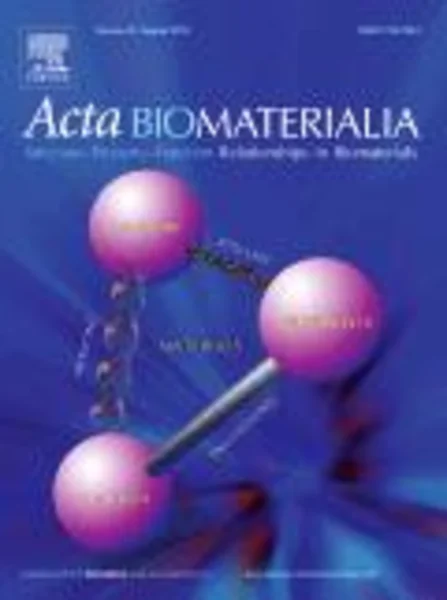-
development of silk-based scaffolds for tissue engineering of bone from human adipose-derived stem cells
جزئیات بیشتر مقاله- تاریخ ارائه: 1392/01/01
- تاریخ انتشار در تی پی بین: 1392/01/01
- تعداد بازدید: 1027
- تعداد پرسش و پاسخ ها: 0
- شماره تماس دبیرخانه رویداد: -
silk fibroin is a potent alternative to other biodegradable biopolymers for bone tissue engineering (te), because of its tunable architecture and mechanical properties, and its demonstrated ability to support bone formation both in vitro and in vivo. in this study, we investigated a range of silk scaffolds for bone te using human adipose-derived stem cells (hascs), an attractive cell source for engineering autologous bone grafts. our goal was to understand the effects of scaffold architecture and biomechanics and use this information to optimize silk scaffolds for bone te applications. silk scaffolds were fabricated using different solvents (aqueous vs. hexafluoro-2-propanol (hfip)), pore sizes (250–500 μm vs. 500–1000 μm) and structures (lamellar vs. spherical pores). four types of silk scaffolds combining the properties of interest were systematically compared with respect to bone tissue outcomes, with decellularized trabecular bone (dcb) included as a “gold standard”. the scaffolds were seeded with hascs and cultured for 7 weeks in osteogenic medium. bone formation was evaluated by cell proliferation and differentiation, matrix production, calcification and mechanical properties. we observed that 400–600 μm porous hfip-derived silk fibroin scaffold demonstrated the best bone tissue formation outcomes, as evidenced by increased bone protein production (osteopontin, collagen type i, bone sialoprotein), enhanced calcium deposition and total bone volume. on a direct comparison basis, alkaline phosphatase activity (ap) at week 2 and new calcium deposition at week 7 were comparable to the cells cultured in dcb. yet, among the aqueous-based structures, the lamellar architecture induced increased ap activity and demonstrated higher equilibrium modulus than the spherical-pore scaffolds. based on the collected data, we propose a conceptual model describing the effects of silk scaffold design on bone tissue formation.
مقالات جدیدترین رویدادها
-
استفاده از تحلیل اهمیت-عملکرد در ارائه الگوی مدیریت خلاقیت سازمانی و ارائه راهکار جهت بهبود
-
بررسی تاثیر ارزش وجوه نقد مازاد بر ساختار سرمایه شرکت های پذیرفته شده در بورس اوراق بهادار تهران
-
بررسی تأثیر سطح افشای ریسک بر قرارداد بدهی شرکت های پذیرفته شده در بورس اوراق بهادار تهران
-
بررسی تأثیر رتبه بندی اعتباری مبتنی بر مدل امتیاز بازار نوظهور بر نقد شوندگی سهام با تأکید بر خصوصی سازی شرکت ها
-
تأثیر آمیخته بازاریابی پوشاک ایرانی بر تصویر ذهنی مشتری پوشاک ایرانی (هاکوپیان)
-
مقایسه تغییرات قاعدگی، در خانم های 35-30 ساله با لوله های بسته با خانم های 35-30 ساله ای که از پیشگیری طبیعی استفاده می کنند در مرکز درمانگاه شماره 6 شهرستان زنجان؛ 76-1375
-
بررسی تاثیر مقادیر مختلف عیار سیمان بر مقاومت فشاری بتن با پودر واکنش زا rpc
-
تهیه نانو ذرات نقره با استفاده از عصاره میوه فوجیا
-
بررسی میزان تری گلیسیرید بعد از غذا در بیماران دیابتی نوع 2 با و بدون سابقه سکته قلبی
-
an investigation into the effects of graphite particles on the damping behavior of za-27 alloy composite material
مقالات جدیدترین ژورنال ها
-
مدیریت و بررسی افسردگی دانش آموزان دختر مقطع متوسطه دوم در دروان کرونا در شهرستان دزفول
-
مدیریت و بررسی خرد سیاسی در اندیشه ی فردوسی در ادب ایران
-
واکاوی و مدیریت توصیفی قلمدان(جاکلیدی)ضریح در موزه آستان قدس رضوی
-
بررسی تاثیر خلاقیت، دانش و انگیزه کارکنان بر پیشنهادات نوآورانه کارکنان ( مورد مطالعه: هتل های 3 و 4 ستاره استان کرمان)
-
بررسی تاثیر کیفیت سیستم های اطلاعاتی بر تصمیم گیری موفق در شرکتهای تولیدی استان اصفهان (مورد مطالعه: مدیران شرکتهای تولیدی استان اصفهان)
-
تبلور عوامل تعجیل ظهور امام مهدی(ع) در پیاده روی اربعین
-
تاثیر مدیریت استراتژیک منابع انسانی بر بهره وری سازمان (مورد مطالعه: شعب بانک اقتصاد نوین در شهر تهران)
-
تأثیر بازاریابی داخلی و گردش شغلی بر بهره وری منابع انسانی با نقش میانجی تعهد سازمانی
-
induced settlement reduction of adjacent masonry building in residential constructions
-
stress concentration factors (scfs) in circular hollow section chs-to-h-shaped section welded t-joints under axial compression




سوال خود را در مورد این مقاله مطرح نمایید :